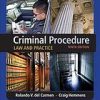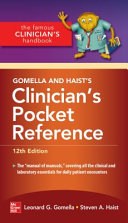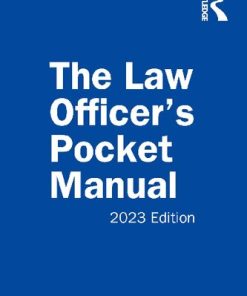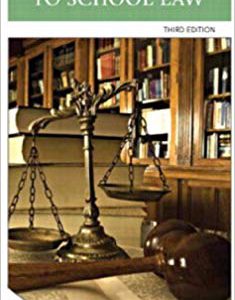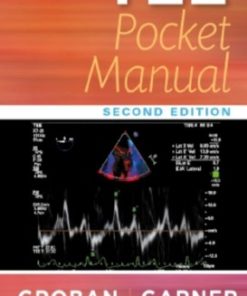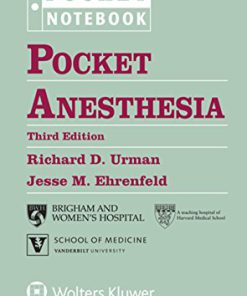The Law Officer’s Pocket Manual 1st Edition by John Miles, David Richardson, Anthony Scudellari 1040049648 9781040049648
$50.00 Original price was: $50.00.$25.00Current price is: $25.00.
The Law Officer’s Pocket Manual 1st Edition by John G. Miles, David B. Richardson, Anthony E. Scudellari – Ebook PDF Instant Download/DeliveryISBN: 1040049648, 9781040049648
Full download The Law Officer’s Pocket Manual 1st Edition after payment.
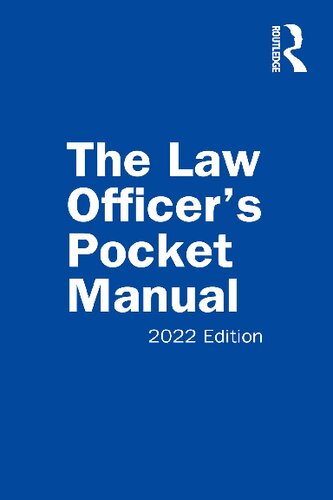
Product details:
ISBN-10 : 1040049648
ISBN-13 : 9781040049648
Author : John G. Miles, David B. Richardson, Anthony E. Scudellari
Prepared by Patrick J. Sobkowski, J.D. The Law Officer’s Pocket Manual is a handy, pocket-sized, spiral-bound manual that highlights basic legal rules for quick reference and offers examples showing how those rules are applied. The manual provides concise guidance based on U.S. Supreme Court rulings on constitutional law issues and other legal developments, covering arrest, search, surveillance, and other routine as well as sensitive areas of law enforcement. It includes more than 100 examples drawn from leading cases to provide guidance on how to act in a wide variety of situations. The 2024 edition is completely updated to reflect recent court decisions. This book helps you keep track of everything in a readable and easy-to-carry format. Routledge offers tiered discounts on bulk orders of 5 or more copies: For more information and to learn about other Books for Law Enforcement Professionals, please visit: https://www.routledge.com/collections/16268
The Law Officer’s Pocket Manual 1st Table of contents:
I. Purpose and Use of This Manual
II. The Police–Citizen Encounter
A. Police Activities That Require No Evidence of Wrongdoing
1. Routine Patrol
2. The Consensual Encounter
3. Community Caretaking Activities
4. Roadblock or Checkpoint Vehicle Stops
5. Canine Sniffs
B. Investigative Detention
1. What You Need to Make an Investigative Detention—Reasonable Suspicion
a. Personal Observation and Information Known to Other Officers
b. Tips From Informers
c. Pretext Stops
2. Conduct During Detention
a. The Terry Stop
b. The Terry Frisk
c. Plain Touch Seizures
d. Additional Officer Security Measures
3. Detention During Execution of a Warrant
4. Motor Vehicle Stops
a. Occupants of Vehicles
b. Duration of Motor Vehicle Stop
c. Luggage in Vehicles
5. Pursuit
6. High-Speed Chases
7. Jurisdiction
C. Qualified Immunity and Civil Rights Violations
III. Identifications
A. In-Person Identifications
1. Right to Have Counsel Present
2. On-the-Scene Showups
3. Immediate Identification Demanded by a Suspect
4. Identification by Witness Without Police Participation
B. Photograph Identification
IV. Arrest
A. When an Arrest Takes Place
B. What You Need to Arrest—Probable Cause
1. Official Reports
2. Crime Victims or Witnesses
3. Reports From “Good Citizen” Informers
4. Anonymous, Paid, or Habitual Government Informers
5. Automobiles
6. Canine Sniffs
7. Defendant’s Reputation or Past Record
C. Misdemeanor Arrests
D. Use of Force to Make an Arrest
E. When You Should Get an Arrest Warrant
F. When You Don’t Need an Arrest Warrant
G. Constitutional Requirements of an Arrest Warrant
H. Requirements for Execution of an Arrest Warrant
I. Foreign Nationals
J. Retaliatory Arrests
V. Search Incident to Arrest
A. Automobile Searches
B. Time and Place
C. Plain View
D. “Sweep” of Premises Where Arrest Has Been Made
E. More Intrusive Searches
F. Obtaining Physical Evidence From the Body of a Suspect Under Arrest
G. Obtaining Physical Evidence From the Body of a Suspect Not Under Arrest
VI. Interrogation
A. When Warnings Should Be Given
1. “In Custody”
2. “Interrogation”
B. When Warnings Are Not Necessary
C. Miranda Warnings
D. When to Repeat the Warnings
E. Interrogating Juveniles
F. The Suspect’s Answer
G. Questioning
H. Belated Warnings
I. Exceptions to Miranda’s Exclusionary Rule
J. Dealing With a Formally Charged Suspect
VII. Search and Seizure
A. Search Without a Warrant
1. Search Incident to Arrest
2. Automobile Searches
3. Emergencies and Exigent Circumstances
4. Hot Pursuit
5. Consent
6. Administrative Searches
7. Probation and Parole Searches
B. “Searches” That Aren’t Really Searches
1. Abandoned Property
2. Open Fields
3. Aerial Surveillance
4. Public Places, “Open View”
5. “Plain View”
6. “Plain Touch”
7. Private Searches
8. Chemical Field Tests and Blood Alcohol Tests
9. Canine Sniffs
C. Search With Warrant
1. Probable Cause
2. Constitutional Requirements for Search Warrants
a. Particularity of Description
b. Anticipatory Search Warrants
c. Computers and Other Special Cases
d. Prompt Execution of Warrant
e. Unannounced Execution of Warrant
f. Damaging Property
g. Items Not Mentioned in Warrant
h. Mistake
3. Oral Applications for Search Warrants
4. Media Presence
D. Automobile Inventories
E. Inventories of Arrestees
F. Administrative Search Warrants
G. Computers and Other Electronic Devices
1. Warrantless Searches and Seizures
2. Getting a Warrant
3. Seizing Electronic Devices
4. Searching Electronic Devices
H. The Exclusionary Rule
VIII. Surveillance and Preservation of Evidence
Part I. Surveillance
A. Police Surveillance Without Electronic Devices
B. Electronic Surveillance of Communications
C. Electronic Devices That Do Not Intercept Communications
1. Pen Registers
2. Tracking Devices
3. Heat-Sensing Devices
Part II. Preservation of Evidence
IX. Entrapment
X. Disabled Persons
A. Assessing the Condition of Persons Who Are Not Fully Conscious or Able to Communicate
B. Arresting Persons With Disabilities
C. Communicating With Disabled Persons
XI. Case References
People also search for The Law Officer’s Pocket Manual 1st:
the law officer’s pocket manual 2024 edition
the law officer’s pocket manual 2021 edition
the law officer’s pocket manual 2022 edition
police officer’s pocket manual
the law officer’s pocket manual 2022
Tags: The Law Officer, Pocket Manual, John Miles, David Richardson, Anthony Scudellari
You may also like…
History - American Studies
Medicine - Anesthesiology and Intensive Care
Medicine & Health Science
Pocket Anesthesia (Pocket Notebook Series) 3rd Edition, (Ebook PDF)
Medicine - Endocrinology
Arts - Architecture


